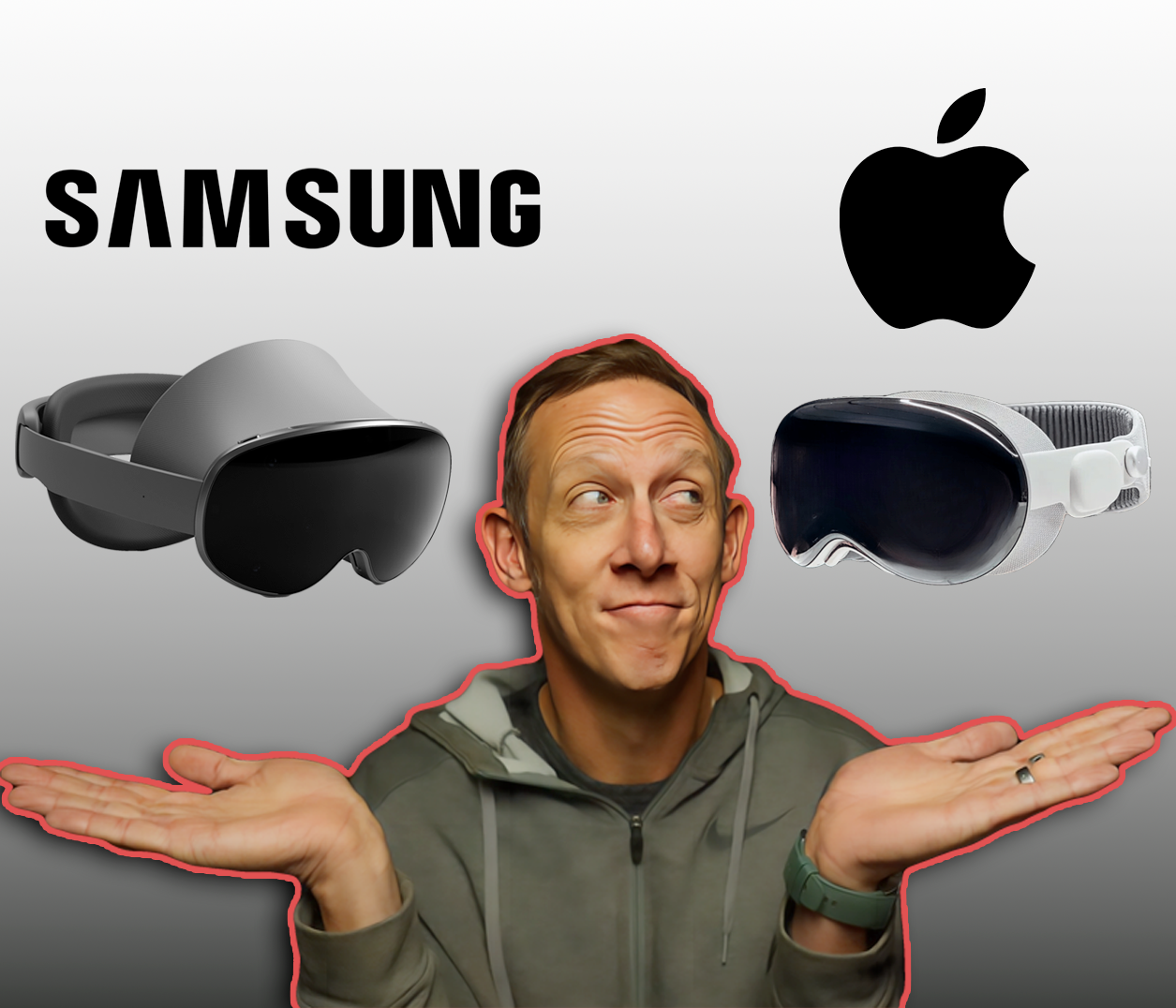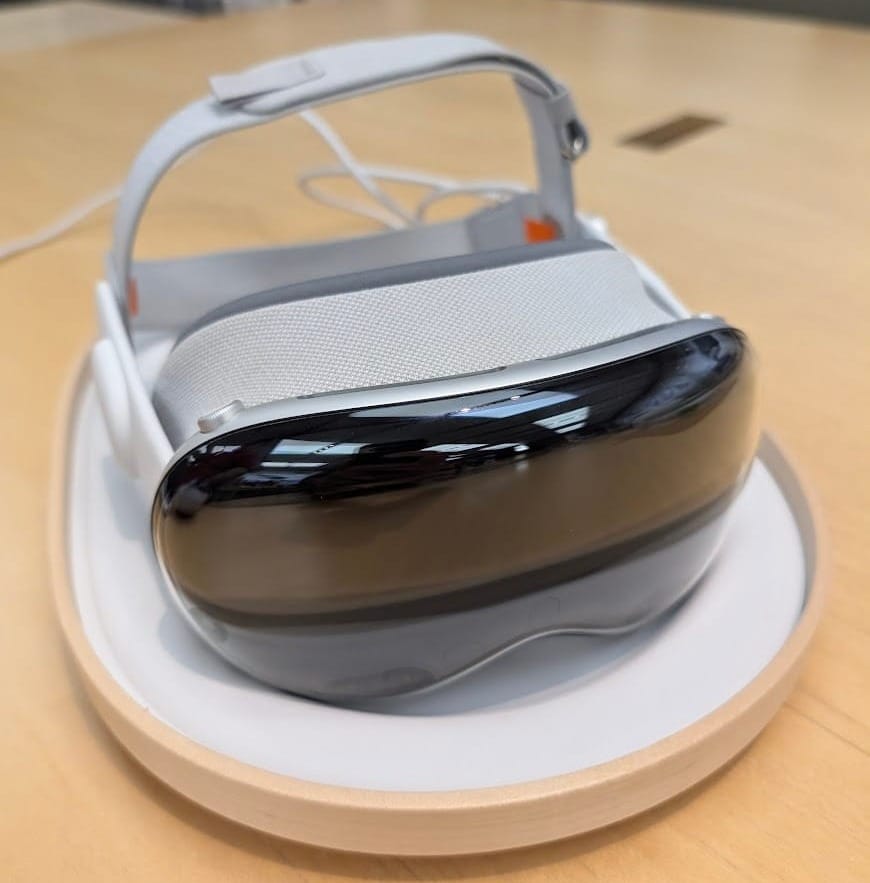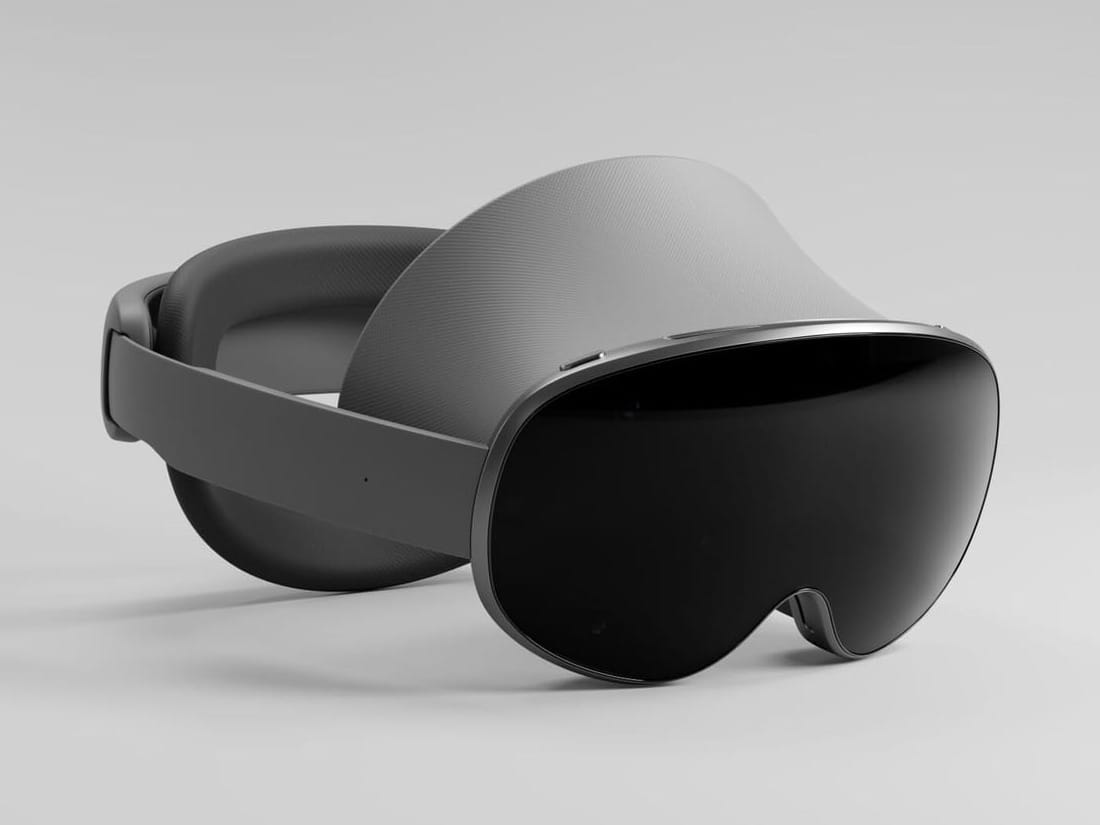Apple's Vision Pro and Samsung's unreleased Project Moohan represent the cutting edge of XR technology. While both devices offer impressive hardware, they take a different approach when it comes to the AI layer and that could be all the difference.


At a time when virtual and augmented worlds are rapidly evolving, two of the biggest companies in tech are putting a lot on the line for the future of extended reality. Apple's Vision Pro, already available to consumers, and Samsung's unreleased Project Moohan, set to debut for all in 2025, represent the cutting edge of XR technology. While both devices offer impressive hardware, they take a different approach when it comes to the AI layer and that could be all the difference.
I was recently invited to the Google campus to check out Samsung’s prototype XR headset. Armed with that experience, I then headed to the Apple Store and booked a 30 minute demo of the Apple Vision Pro to compare the two headsets against each other.
The Apple Vision Pro exudes premium craftsmanship, blending soft cloth materials with polished metallic accents. Its rounded, curved eyeglass front is a standout feature, giving it a sleek, futuristic look. The speakers, cleverly embedded into the straps, delivered impressive audio quality even in the noisy environment of the Apple Store during peak holiday rush.

In contrast, Samsung's Project Moohan takes a slightly different approach. While it features a minimally curved front glass along with a similar metallic frame, it employs a large hood cover that effectively blocks top light. This is done to enhance the immersive qualities of the experience and is made double so with the optional lower hood. Both devices utilize external battery packs for power that extend down from the headset to your pocket or belt buckle.
One unique feature of the Vision Pro is its EyeSight display, which shows a representation of the user's eyes on the exterior of the goggles. This wasn't available for me to test, but it's an intriguing concept for maintaining a connection with others in the room.
After 30 minutes of use, the Vision Pro's comfort was a mixed bag. The headstrap, with its soft velcro fasteners and additional top-down support, initially felt comfortable and snug. However, the weight of the device became noticeable rather quickly and by the end of the session, my face felt unmistakably warm.

Project Moohan presented a slightly different experience. Its headstrap, while less form-fitting and more rigid, utilized a twisty knob for adjustment that was surprisingly quite comfortable and form fitting. Interestingly, there was no top strap like the one I experienced on the Vision Pro. The most obvious difference was in heat management and weight distribution. After 30-minutes, I experienced no “hot face”, and the weight of the device didn’t stand out either.
Both devices offer similar hand control gestures, including pinch, pinch-swipe, and two-hand pinch for resizing objects.
The Vision Pro relies heavily on eye tracking, which seemed to be the intended control mechanism for most users. The eye tracking setup process was notably longer than Moohan's yet both were similar in accuracy. Apple incorporates a unique physical crown for some controls, reminiscent of the Apple Watch.
Moohan takes a more multimodal approach to input. It features ray pointing as a standard hand control feature, something the Vision Pro offers for those willing to dive into the Accessibility settings. Moohan also includes a trackpad surface on the side of the device, and puts a stronger emphasis on voice control. Eye tracking is present but feels like one of many options rather than the primary method. Samsung has confirmed that Moohan will support external controllers, though it's unclear if they'll be included with the device when it hits the market next year.
The most significant differentiation is in voice control. While the Vision Pro uses Siri for basic commands, text input, and recently for ChatGPT queries, Moohan integrates Google's Gemini AI as a core component of the experience. This isn't just about issuing commands; Gemini provides conversational context throughout the entire XR experience, along with multimodal understanding of the world outside of the headset.
In terms of visual quality, both devices impressed me with their sharp, high-resolution displays. Movies, videos, and virtual objects overlaid on the real world appeared clear and vibrant. To my eyes, the resolution between the two was nearly indistinguishable.
The Vision Pro did exhibit some occasional flickering and lower frame rates in passthrough mode. However, it offered some unique visual features, such as a pleasing fade effect when people enter my immediate space and the ability to use the crown to smoothly transition between environments.
Moohan, while having a seemingly smaller field of view, allowed for some interesting depth interactions. I was able to push virtual windows behind real-world objects, though they didn't persist in that position when I let go of them. The exact specifications of Moohan's display are still unknown, but I am very curious to learn more once they are released sometime next year.
Apple's strength lies in its tightly integrated ecosystem. The Vision Pro seamlessly connects with other Apple devices and services, including AirPlay, iCloud, and a full suite of productivity apps like Pages and Keynote. It runs on visionOS, which supports most iPadOS and iOS frameworks, making it relatively easy for developers to adapt existing apps.
Project Moohan leans heavily into the Google ecosystem, with my demonstrations showcasing Chrome, Google Photos, YouTube, and Google Maps. While details are still emerging, developer documentation suggests that most Android apps will be compatible with Android XR, potentially giving Moohan a solid library of software at launch. As for the vast library of games available for the competing Meta Quest, Unity support should hopefully provide a seamless roadmap for porting to Android XR with relative ease.
The Apple Vision Pro is available now, carrying a premium price tag of $3,499. This positions it firmly in the high-end market, primarily targeting professionals and early adopters.
Samsung's Project Moohan is shrouded in more mystery. It's been reported to launch sometime in 2025, while some details are expected to be shared at Samsung's unannounced Unpacked event early in the year. While no official pricing has been revealed yet, its my opinion that Moohan will be markedly more affordable than the Vision Pro.
What truly sets Project Moohan apart is its emphasis on AI integration. The Gemini-powered voice assistant isn't just a feature – it's a fundamental part of how you interact with the device and your digital world. This conversational AI has the potential to make the XR experience feel more natural and less like you're navigating a complex computer interface. Not only that, Gemini’s multimodal capabilities on-device give Moohan a level of understanding of the real world that will heighten the unique immersive nature of the XR experience.
While Apple's Vision Pro is an undeniably impressive piece of hardware, Samsung's approach with Moohan feels like it could be more transformative in the long run. By prioritizing AI and multiple input methods, Samsung might be creating a more accessible and adaptable XR platform.
The biggest challenge for XR in my view lies in making the chosen platform feel like a natural and indispensable part of our digital lives. Though Apple has first-mover advantage and a signature premium appeal, Samsung gives us a glimpse of how these virtual spaces can be transformed into an intelligent utility and not simply a unique and expensive curiosity.